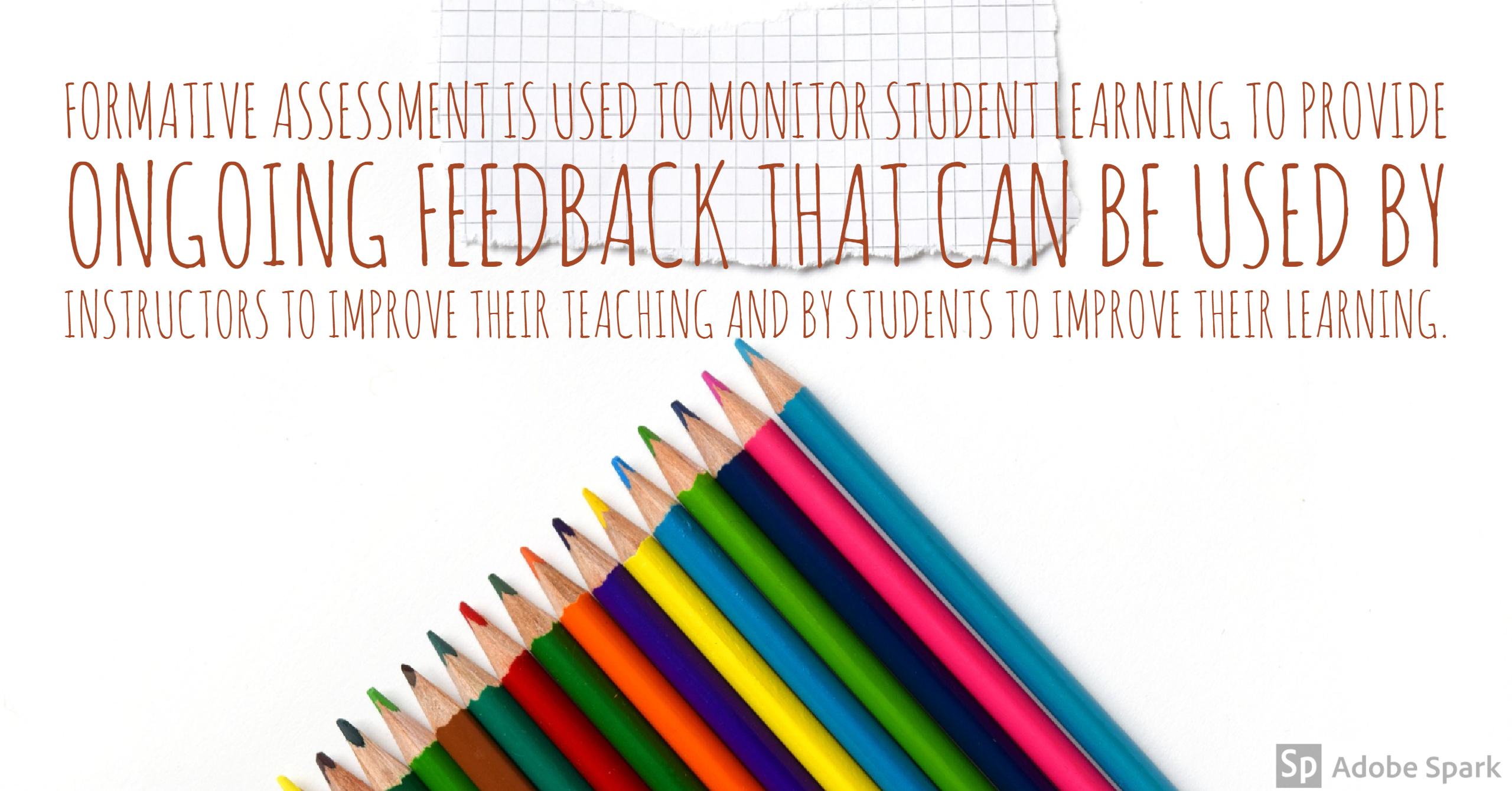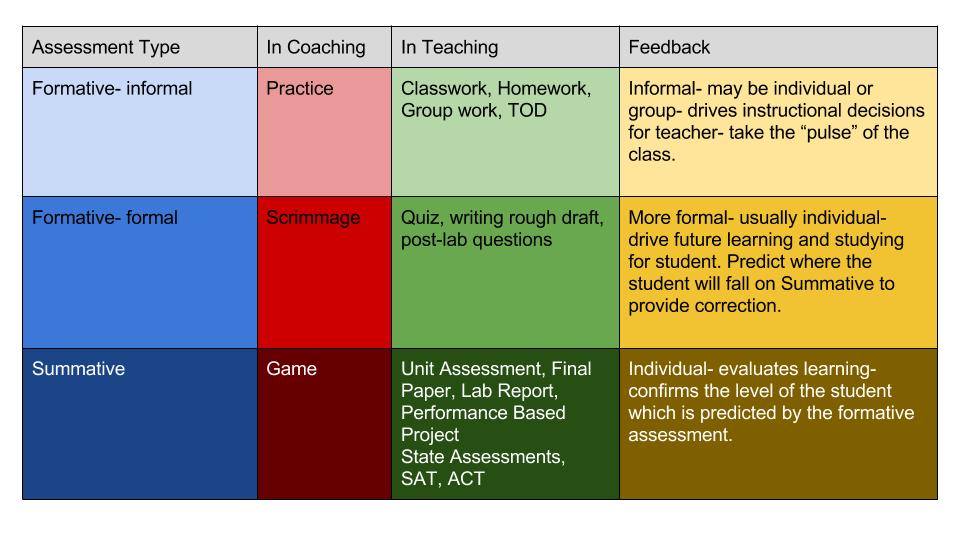“Formative assessment is used to monitor student learning to provide ongoing feedback that can be used by instructors to improve their teaching and by students to improve their learning.”
Carnegie Mellon University: Teaching Excellence & Educational Innovation
Formative assessments
- helps students identify their strengths and weaknesses
- help students and teachers select learning targets that need work
- help teachers recognize where students are struggling to address the problem within the instructional unit
- drive differentiation and instructional pacing
- usually low stakes (means that they have a low or no point value)
Using the instructional coaching analogy- the table below helps to explain the difference between formative and summative assessments.
The following tools have been categorized as either informal or formal based on their common usage; however, it is possible to use a tool for either purpose. It simply depends on the situation.
Formative Assessment: Informal Tools
- Ticket out the Door Strategies
- Clothespins, Magnets, and Stickers. Oh my!
- Exit Tickets
- Post it Notes- What Stuck with you today? (Post-it-Plus is useful here)
- Traffic Light
- Poll Everywhere
- Answer Garden
- Spiral
- Wheel of Fortune
- Google Keep
Formative Assessment: Formal Tools




